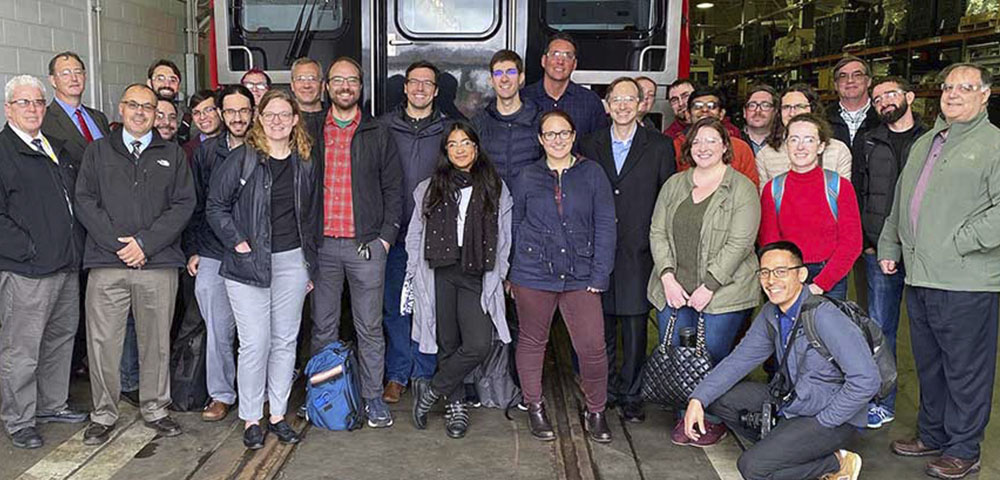“We work for riders,” said MBTA Chief Digital Officer David Gerstle.
With that in mind, the MBTA asked students from the Rappaport Greater Boston Applied Field Lab at Harvard Kennedy School to explore ways to add new revenue and decrease vendor dependence by considering whether to bring to market some of the remarkable transit technology developed by the CTD team.
Working under the guidance of Harvard Professor Linda Bilmes and HKS Lecturer in Public Policy Brian Iammartino, students Christine Peterson (HKS ‘21), Anna Kamen (HKS/MIT Sloan ‘22), Sunghea Khil (HKS/Harvard Graduate School of Design ‘22), Iheb Chalouate (HKS/MIT Sloan ‘23), Mojib Ghaznawi (HKS ‘21) quickly dug into this interesting assignment.
“Our mandate was to look into the portfolio of technologies that CTD develops and determine which of these products could be valuable to other transit agencies,” Kamen said. “And then, the question becomes, ‘How do you actually bring those to market with an eye toward recouping some of the development costs that went into these technologies?’”
Issues concerning revenue generation – particularly following decreased ridership during the pandemic – and “vendor lock-in” (in which case when a customer becomes dependent on a particular vendor over time and loses the fiscal advantage of competition), are certainly not unique to the MBTA.
“A lot of transit agencies throughout the country were grappling with this as well,” Peterson said. “They immediately recognized the problem we were trying to solve.”
In that sense, it wasn’t just an opportunity for the MBTA to discover ways to help its own bottom line, but to potentially pilot a unique way of doing business and provide a new way for transit agencies to think.
“It could be that the MBTA becomes a leading voice in how transit agencies can better serve their customers and have a more cost-effective way of tackling a very old problem,” Khil said.
The Customer Technology Department is the MBTA’s in-house software company, born from the 2015 snowstorms which grounded Boston’s transportation system and revealed deficiencies that required tech-savvy responses. The CTD started with an overhaul of the MBTA’s website and, six years later, it oversees four lines of business: Riders Tools (like MBTA.com); Transit Tech (digital feeds of transit schedules and locations); Digital Ride (rider alerts on information screens); and Revenue Partnerships (technologies to help riders and companies buy transit passes).
CTD is a relatively unique concept within transit organizations, but Gerstle believes it’s a concept that makes a whole lot of sense considering the narrow scope of what happens in transportation.
“When you start to look at the size of the transit industry, the number of private offerings is really very small,” he said. “The types of challenges we face as an agency are unique, to the point where it is more cost-effective to build these types of tools in-house, rather than buying something off the shelf or buying software and then customizing it to our needs.”
One fiscal choice considered was to utilize the industry-specific work being done in-house and possibly share it, for a price, with other transit agencies. This is where the Rappaport student team came in.





